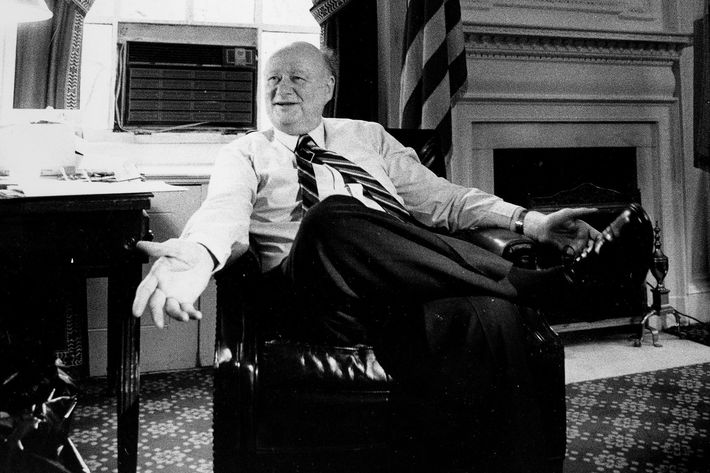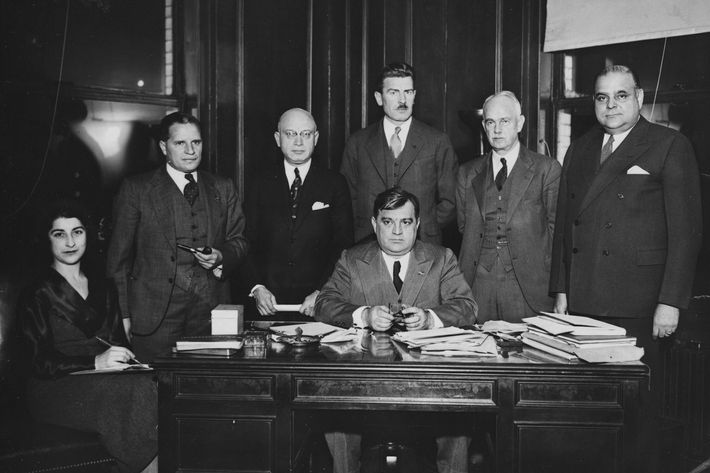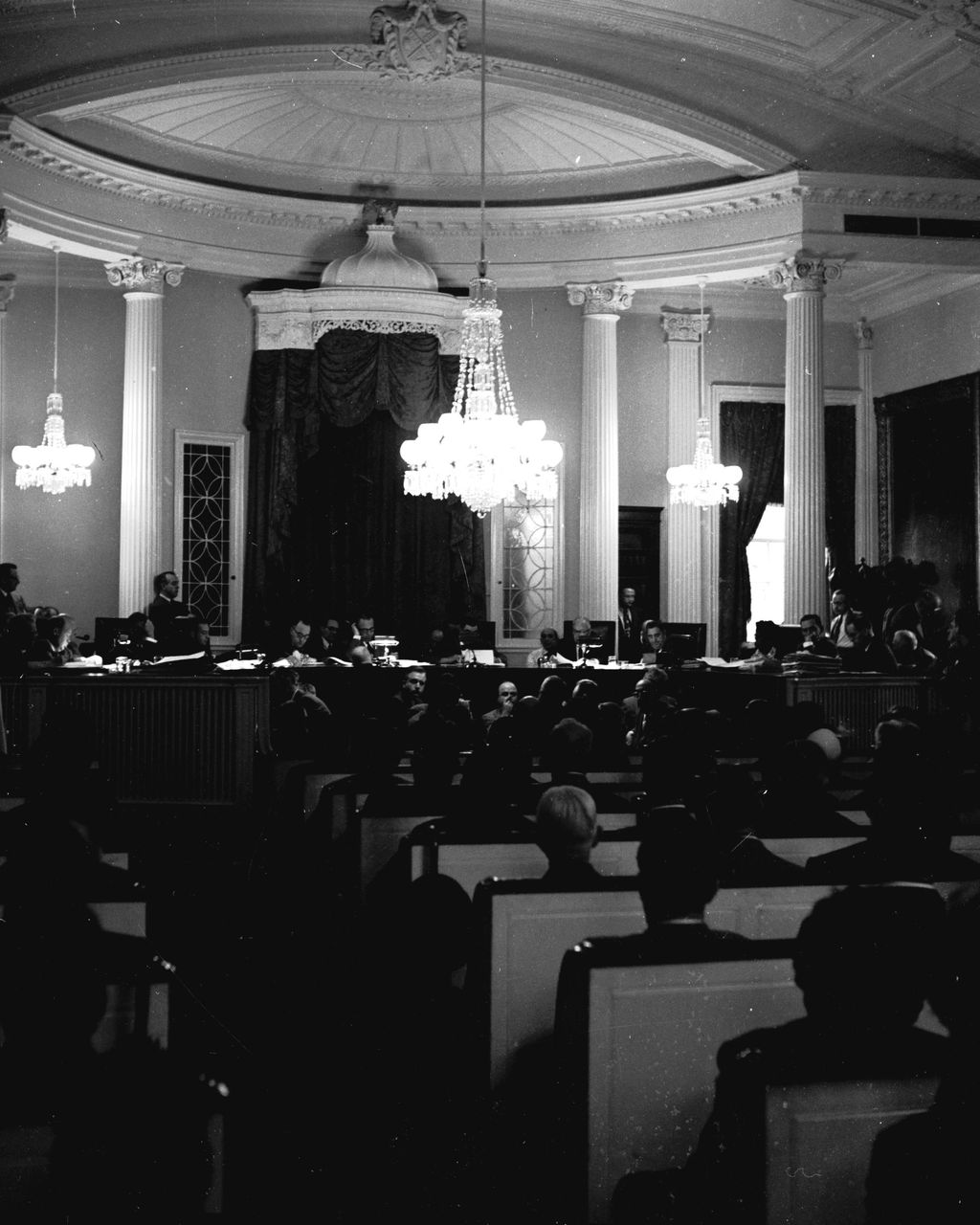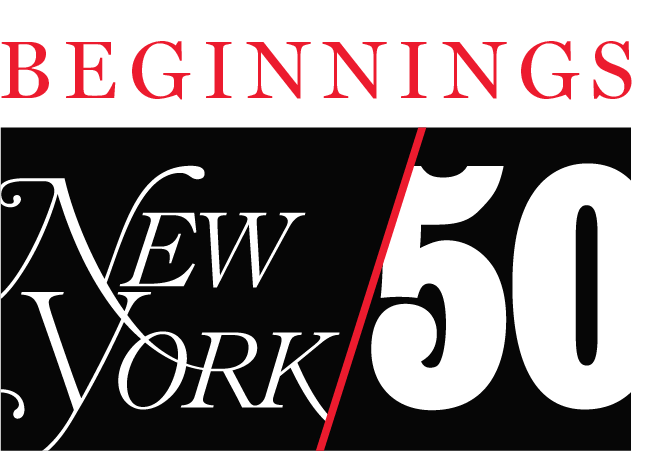In celebration of New York Magazine’s 50th anniversary, this series, which will continue through October 2018, tells the stories behind key moments that shaped the city’s culture.
When the verdict came down from the Supreme Court, it was like a torpedo sent from Washington to New York City, sent to obliterate the political system that had governed the nation’s largest city for 90 years. With a unanimous ruling, the court decided that the Board of Estimate violated the principle of “one person, one vote.” They may as well have decided that the U.S. Senate and half of federal Cabinet agencies were unconstitutional too, and left 245 million Americans the task of figuring out what should come next. The year was 1989. The city was already consumed with crime and crack, riots and race, and now here was the highest court in the land telling New Yorkers that the only system of municipal government the city had ever known was a lie, one that screwed over the vast majority of its citizenry.
“It was nothing short of revolutionary,” said Bruce Berg, professor of political science at Fordham University and author of Governing Gotham.
It is impossible to imagine the New York City we have come to know — a place that, despite its myriad problems, is growing, functions relatively smoothly, and with low levels of out-and-out corruption — with the Board of Estimate still in place. The political system that replaced the old board ushered in the city politic we live in currently, one with a fractious City Council, a strong mayor, a number of almost ceremonial offices like the public advocate’s and the five borough presidents, and party machines that are a shadow of their former selves. The city’s comeback from the doldrums of the 1970s and ’80s are in part due to the collapse of the Board of Estimate, as the parochial interests that gunked up the political system were replaced by a strong mayor system with a council making policy and power headquartered at City Hall.
The Board of Estimate arose out of the consolidation of New York City, in 1898. Big counties like Brooklyn and Queens feared living under the bootheel of Manhattan domination. So at the Board of Estimate, each borough president got one vote, while the three citywide elected offices — of mayor, comptroller, and the now-defunct City Council president, got two. There was a 35-member City Council too, but either by custom or by charter its most substantive municipal acts were things like proclamations and street namings. “What is the difference between the City Council and a rubber stamp?” wagged Henry Stern, Ed Koch’s Parks commissioner. “A rubber stamp leaves an impression.”
The Board of Estimate meanwhile met in a literal smoke-filled backroom on the second floor of City Hall — later repurposed for Mike Bloomberg’s bullpen. The board determined nearly everything that had to do with city government: budgets, land-use decisions, contracts, and where to place city-owned facilities like shelters and prisons. Its proceedings were deliberately opaque. The agenda was printed on something known as the Calendar, a tiny-print broadsheet from which the pages spilled out when opened. Meetings stretched on into the night. Most alarming for first-time visitors, however, was when they would peer upon the table where the Board met, and in the assigned seat, behind the appropriate nameplate for, say, Mayor Abe Beame or Comptroller Harrison J. Goldin, were not Mayor Abe Beame and Comptroller Harrison J. Goldin but some fresh-faced young aides who looked like the mayor’s wayward great-nephews. The real players were meeting elsewhere, in a backroom of the backroom, as it were, hashing out city policy among themselves. New Yorkers would line up to publicly comment, but it was a piece of Beckettian theater, with the issue decided the night before and the members of the Board’s doppelgängers sitting in their place.
Because proceedings were so opaque, elected officials were largely shielded from their decisions, and could always blame other board members when constituents pressed. Votes were often 11–0, which an aide to Mayor Ed Koch called City Hall’s “unaccountability policy,” since it spread blame across the board.

The borough presidents, representing five of the eleven votes, were often just the tools of the powerful various county Democratic machines. The county Democratic leaders were unelected by the voters (although often they served as borough presidents as well) but presided over a robust patronage system that seeped down to the precinct and clubhouse levels. “The borough president first represents the Kings County Democratic machine,” a Brooklyn reverend testified at a hearing about the board just before its demise. “Secondly, represents the campaign contributors, contractors, lawyers, and insiders who grease the machine. Third, he represents the council people whom he or she controls. And four, when time permits, the rest of us.”
How powerful were the county leaders? Meade Esposito, the chair of the Brooklyn Democratic Party — and someone Donald Trump listed as his political idol — once took a New York Times reporter out to lunch at Foffe’s Restaurant on Montague Street. A judge came over to their table. “Hi, boss,” the judge said to Esposito. The county leader explained that the reporter was doing an article on him.
“Is he going to do right by you?” the judge asked.
“If he doesn’t,” Esposito responded, “I’ll break his ankles.” (Esposito was convicted in 1987 for buying off a congressman.)
Ultimately, the problem with the Board of Estimate wasn’t that it wasn’t the Athenian agora. The problem with the Board of Estimate was that it diluted the voting power of millions of New Yorkers. By the late 1980s, Staten Island had a population of 350,000, and sent one representative to the Board of Estimate. Brooklyn had a population of 2.2 million, and sent the same number.

In the summer of 1981, Richard Emery, a lawyer for the New York Civil Liberties Union, was driving out to the Hamptons, where his family had rented a house with another NYCLU lawyer, Art Eisenberg. He suggested they take on the Board of Estimate on the grounds that it was unconstitutional. Eisenberg demurred. Even the city’s good-government groups weren’t clamoring to reform the Board. It was as much a part of the city as the street grid.
“It was this fraud that was being perpetrated on the people of New York through governmental systems that were essentially corrupt,” Emery said earlier this year in an interview in his law office across the street from Rockefeller Center. “Everything was done by and for the Democratic machines, you had these borough presidents who were just ciphers for the county leaders, who were always going to prison for corruption of one sort or another, and then the absurdity of people lining up to testify thinking that their voice could make a difference.”
Still, the two drafted a complaint that weekend and filed it in the Eastern District, enlisting the wife of a friend of theirs along with two other women to serve as plaintiffs. The city argued that the board wasn’t a legislature, so it was not subject to “one person, one vote,” even though the board did all the things that legislatures do, like hold hearings, approve budgets, and make decisions over land use.
The case lost at the district court, but won on appeal, and Emery was certain that was where it was going to end, and that the Board of Estimate was going to be eliminated. It was 1988. He was walking out of the Sony Building on Madison Avenue when he got a phone call on his brick-like 1980s cell phone. The caller on the other end announced that the Supreme Court was going to take up the city’s appeal.
“I couldn’t believe it. I’d won, and they were taking it away from me.”
The city, however, could tell where this was headed. In 1986, a massive pay-to-play scandal in the city’s Parking Bureau ripped through City Hall, resulting in the suicide of Donald Manes, who was both the borough president of Queens and the county’s Democratic boss. The current setup was becoming increasingly untenable. Mayor Koch called for a Charter Review Commission, tasked with rewriting the city’s de facto Constitution, and asked Frederick A.O. Schwarz, an heir to the former Fifth Avenue toy store, to lead it. Before doing so, however, he asked Schwarz over to Gracie Mansion for dinner. Schwarz was Koch’s corporation counsel — the mayor cried when Schwarz told him he would stay on the job after the Parking Bureau scandal, and the two had a history of having weighty discussions over copious amounts of food and wine. This time, after the dinner was done, Koch asked Schwarz to slow-walk the charter review commission work. This was 1989, and there was an election coming up, one in which Koch would face Manhattan borough president David Dinkins, who was aiming to be the first black mayor of New York, and Koch feared that the commission, with all its talk about minority representation, would stir up racial animus.
Schwarz told him he wouldn’t. Delay meant that if the city lost the court case, as Schwarz thought it would, New York would be ruled by an unconstitutional government until a new system could be put in place.
But if Schwarz was confident the city would lose, Emery was not. Something of a rock star in the city’s legal community in the 1980s, Emery was married to the actress Lori Singer, star of Footloose and Fame, dividing his time between New York and Los Angeles. He thought they had a good case, but the fact that the Supreme Court even agreed to hear the city’s appeal of the lower court’s decision was a bad sign. That summer, back at the Hamptons and playing a softball game with Mort Zuckerman, Carl Bernstein, and other members of the summer set, Emery broke his leg on a routine fly ball to center field. The injury proved to be auspicious. Emery had to use crutches and stayed in New York for the rest of the summer, where he holed up in his East Side apartment and prepared for his argument on the court.
The night before what was to be Emery’s first and only appearance at the Supreme Court, his confidence evaporated. He had begun to see the city’s argument. Maybe the Board of Estimate really was the best way to govern New York City. Emery and Lori Singer were big devotees of Cus D’Amato, Mike Tyson’s legendary trainer.
“Cus had this whole theory of boxing that was about channeling your fear. Take the fear and use it and go straight at it.”
So on the steps of the Supreme Court, Singer acted as Emery’s corner man, huddling over him, telling him, “The fear is good for you. You want to be afraid.”
The oral argument, though, turned out to be a breeze, and it was clear from the start that all of the justices were on Emery’s side. The only fly in the ointment was Thurgood Marshall, who tried to wrong-foot Emery with questions like, “Can you name any other jurisdiction that has boroughs?”
Marshall, though, was a legal pioneer of the “one person, one vote” theory, and the rest of his public comments seemed to echo the thoughts of Dinkins, who had written a friend-of-the-court brief for an earlier version of the case and who was friends with Marshall. (Emery had visited Dinkins in his basement office in the Municipal Building years earlier to get him to sign on to the case; in the course of the meeting Dinkins took his pants off, hung them from a hanger, and began to steam them. “So fastidious about his clothes, that guy.”)
Schwarz, although he is now 82 years old, still keeps an office at the Brennan Center for Justice. In 1989, his commission, which was filled with other patrician do-gooder types, like CBS News president Fred Friendly, Lincoln Center president Nat Leventhal, and Bishop Joseph Sullivan of the Brooklyn diocese, set to work. They went around the city, gathering input from regular New Yorkers and dealing with the abuse that such invitations to an open hearing tend to elicit in New York. (“Schwarz, Schwarz, have you heard?” went one chant. “New York is not Johannesburg.”)
The main opposition came from sitting members of the Board of Estimate, who didn’t want to see their power diminished. One, Howard Golden, the borough president of Brooklyn, chastised the commission for a “scheme that would make the people of Brooklyn second-class citizens subject to a Manhattan-oriented government,” “a sham, a house of cards” that would lead to “black [council] members from Brooklyn forming alliances with black members from the Bronx” instead of sticking together as a borough.
“What would be the point?” Golden asked, never mind that his borough was finally due to receive its fair share, and that part of the point of dismantling the Board of Estimate was to bring more minority voices into government.
Schwarz’s commission wasn’t merely an exercise in high-minded constitution-making. Whatever they came up with would need to be approved by the city’s voters. So they waited until the very end of the process to slip in a provision barring borough presidents from also serving as county party leaders, and added an obscure item to the charter about landmarked church buildings that brought Catholics into their coalition.
But most important, the new charter mandated that the city eliminate the Board of Estimate and create a 51-member City Council. It made for a very strong mayor, but a strong council too, if it was willing to exert its prerogatives.
Schwarz campaigned for the measure all over the city. In the end it won by ten points on the same day David Dinkins won election as the first African-American mayor of New York. The Times front-page headline is framed in Schwarz’s office.
It is impossible to overstate what a sea change the end of the Board of Estimate has meant for New York City politics. Soon after its demise, the city passed a generous campaign-finance program which took big money out of politics. Term limits came soon after that. It ain’t Shangri-la, but it would be hard to find a cleaner, more dynamic, more progressive, and less corrupt big city in America. There are still bad actors, to be sure, but relatively little systemic fraud. The political bosses are gone, relegated to appointing judges and, maybe, if they are lucky, getting an ally elected Speaker of the City Council. In the days of the Board of Estimate, writing about New York City politics as politics was hard; there just wasn’t that much going on, as old men held on to their seats until they died or were hauled out of office in handcuffs.
In the old days, if you had a problem in your neighborhood, you had better hope that one of your neighbors was a Democratic ward-heeler, which would maybe get you an audience with a deputy in the borough president’s office. Now, just get a dozen people in your building together and march down to your local council member’s office. It isn’t hard to get at least a response.
There are more checks in the system too, which means bigger projects are harder to get done, but the city can engage in long-term planning too in a way that was impossible under the old regime, which dealt with structural issues on a microscopic basis.
“The B of E isn’t worth saving,” a Daily News editorial opined at the time. “It’s an exercise in deal-making, not policy-setting. The members strike bargains on homeless shelters, for example, but never consider how to solve homelessness.”
New York’s political leaders probably still don’t spend enough time figuring out how to solve homelessness. But if they wanted to, or more importantly, if a group New Yorkers wanted them to, they could at least try to, and then be held accountable for succeeding or failing. Progress is still slow, but at least large majorities can move the political needle in a way they couldn’t through most of New York City’s history.
“Politics is much more visible now to the citizen who wants to pay attention,” says Berg, the Fordham professor. “It’s a much more responsive system, and it’s a much more messy system. Does it mean economic development is a little harder? Sure, but if it means the political system is more meaningful and more impactful, so be it.”































